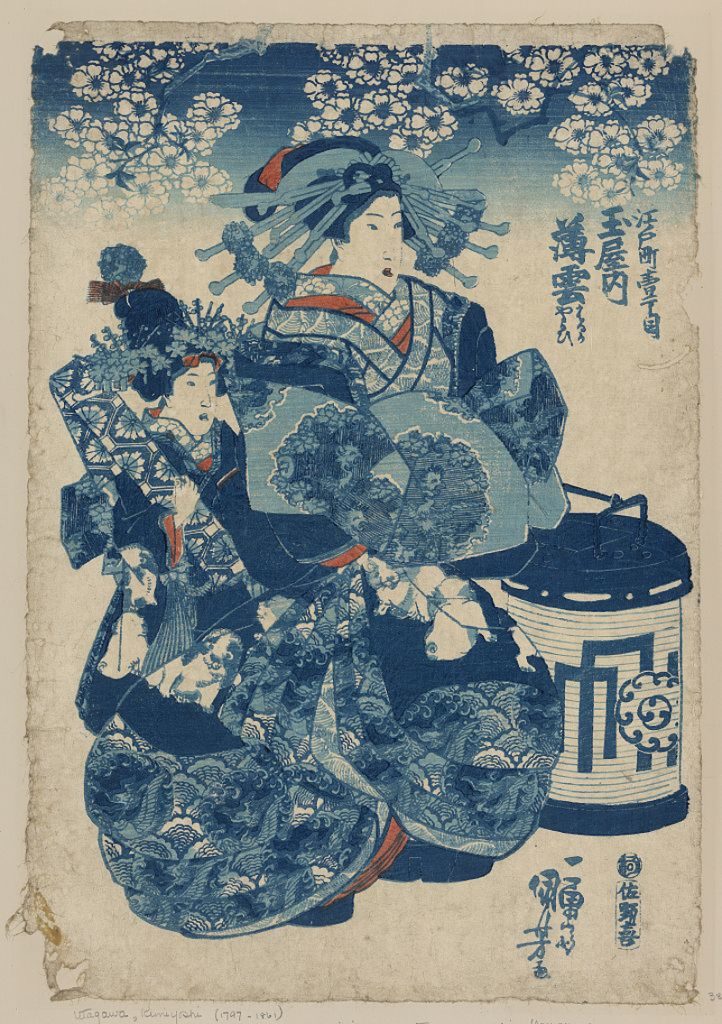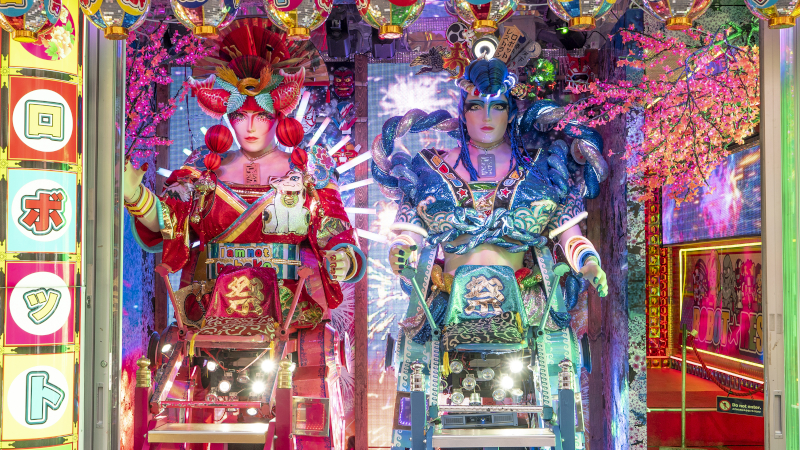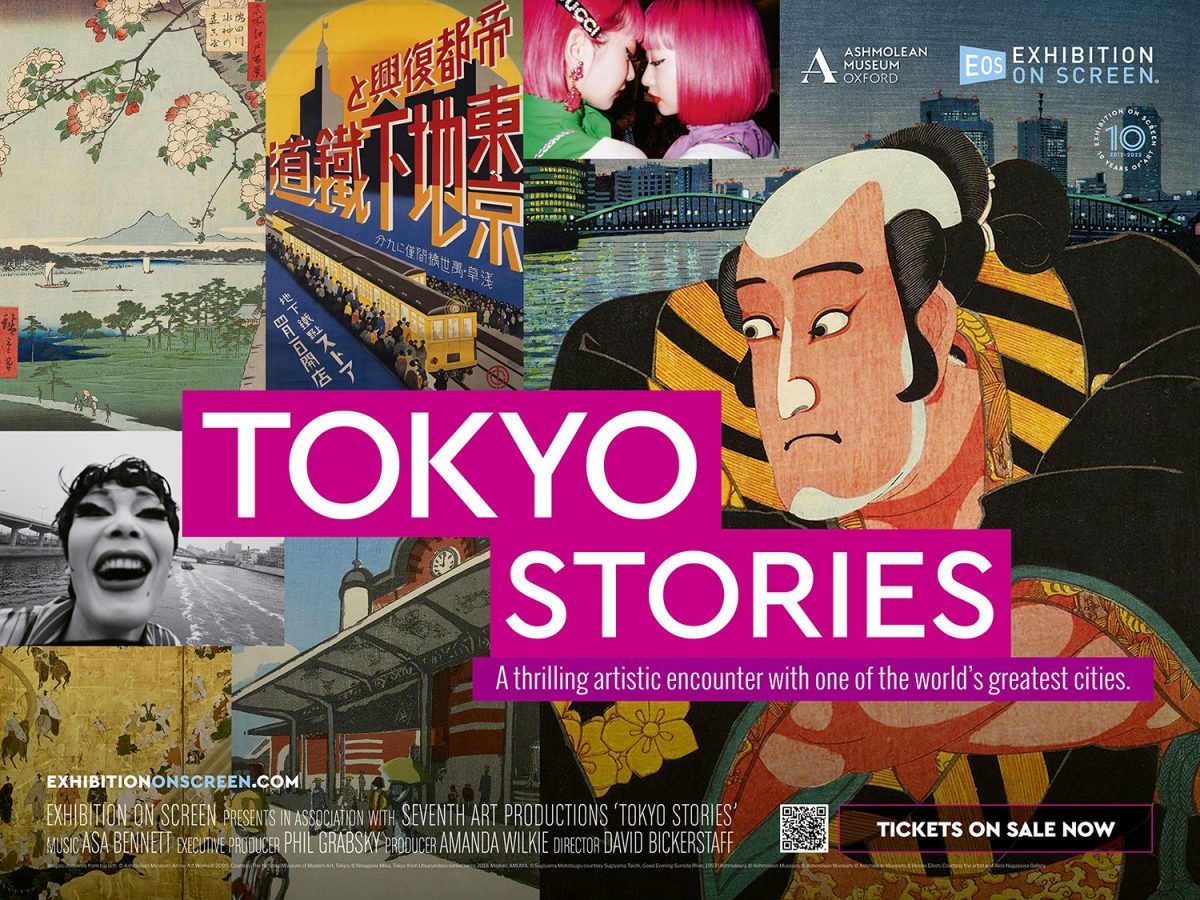Director – David Bickerstaff – 2023 – UK – Cert. 15 – 90m
*****
Japan generally and Tokyo specifically are viewed through that city’s art and photography – out in UK, Irish and worldwide cinemas on Tuesday, May 23rd
The refreshing thing about this latest entry in producer Phil Grabsky’s excellent Exhibition On Screen series is that it breaks the mould. Like Vermeer The Greatest Exhibition (David Bickerstaff, 2023), it is centred around a particular art exhibition, in this instance 2022’s Tokyo: Art + Photography show at Oxford’s Ashmolean Museum. That event sought to give a perspective on the country of Japan generally and the city of Tokyo specifically through its art, both historical and contemporary. The Ashmolean is well-placed to do this, given that it already houses a wide-ranging, historical Japanese collection. Sadly, it means that if this film whets your appetite and makes you want to visit the exhibition, you can’t then do so because it’s been and gone. In a way, though, that’s not so dissimilar from the Vermeer exhibition, which had sold out before the documentary about it appeared.
While the film is swift to acknowledge areas of Japanese culture as diverse as manga (one of the first shots of Tokyo features a giant image of manga and anime favourites Dirty Pair) and traditional Japanese music (a stringed and a woodwind instrument are shown being played by musicians without any explanation or even naming of the instruments), such elements remain largely in the background. The focus is instead on art in Tokyo from the 17th Century to the present. Photograher Moriyama Daido describes the city as “a stadium of desire”.
Nishino Sohei’s Diorama Map Tokyo (2004) is a vast collage comprising numerous small black and white photos of the city which aren’t immediately obvious in the overall single composition of the metropolis; only when you stop to look more closely do you notice all the, separate pictures within the whole. The artist talks about reconstructing the memory of experience, or of journey. According to independent gallery owner Michael Hoppen, Sohei is defined, like many Japanese artists, by obsession. These, he says, are not maps of the city so much as portraits of it.

A potted history of Tokyo delivers some essential context, although it’s not expressed as clearly as it might be. Edo, an unimportant fishing village, became the seat of the Tokugawa Shogunate in 1603. Within the comparative stability of the next two and a half centuries in the ensuing Edo period (1603-1867, aka the Tokugawa period), samurai were expected, along with retaining their warrior skills, to become patrons of the arts. Unlike the West, however, art worked out much more populist, picking up on the huge demand for images of actors and courtesans who were the stars of the ukiyo-e (pictures of the floating world), with the cost of a print working out at around that of a bowl of noodles, meaning that art was something everyone could afford. Artists such as Utamaro and Eisen produced images of courtesans, Kuniyoshi of Kabuki actors, and Hiroshige of famous places. These feed into contemporary artist Yamaguchi Akira’s contemporary views of Tokyo, which incorporate elements not only from traditional art but also from science fiction and fantasy iconography.

With the fall of the Tokugawa Shogunate and the ascension of the Emperor Meiji, the Meiji period (1868-1912) saw the opening up of Japan to the outside world and trade with Europe. As Japanese art found its way to Europe, so Western art found its way to Japan, along with the Western ideas of art academies and the teaching of art. Japanese art at this point split into two styles – the Western of Yoga style and the Japanese of Nihowga style. Artist Aida Makoto juxtaposes a cherry blossom tree with prostitutes’ erotic, telephone booth cards to show the transformation of an area from beauty into love hotels, prostitution and control by yakuza. In similar vein, Matsui Fuyuko depicts a Western style cherub angel with its guts exposed.
In the narrative here, Modernism evolved apace alongside urban lifestyle until the Second World War, when it was suppressed. (This simplified view of Japanese history omits the Sino-Japanese War, presumably for the benefit of viewers whose knowledge of art may be rather more comprehensive than their knowledge of Oriental history. Since this particular documentary is as likely to appeal with those with an interest in Japan as to art-lovers, this is a peculiar omission, to say the least.)

The bombing of Tokyo by the Allies in WW2 was unprecedented. 1960s pop artist Tanaami Keiichi recalls his mother taking him home during a bombing raid through streets littered with charred and blackened corpses, which he could see through the fingers of his mother’s hand as she attempted to cover his eyes and hide such atrocities. What preserved his sanity as a child, he claims, was that he drew manga, copying the works of Tezuka Osamu day after day. Again, the film assumes its audience will know who Tezuka is, but those versed in art but not manga, anime or animation may be lost: Tezuka is most famously the creator of Astro Boy, and anyone who knows that work will immediately see its influence in some of Tanaami’s paintings shown here.
A section on Destruction And Renewal talks about Tokyo’s being hit by a big earthquake once in every 25 or so years. Giant catfish or Namazu prints distributed after the 1855 quake showed giant catfish living under the city responsible for the mayhem. The Ashmolean’s Japanese art expert Clare Pollard describes this cathartic dealing with trauma as laughing in the face of death while its contemporary art expert Lena Fitsch talks about it in terms of the fleetingness of life. Again, in keeping with the lack of focus on popular culture, no mention is made of Godzilla, Japan’s movie personification of natural and man-made disaster (a brief shot in which a Godzilla statue can be seen goes verbally unremarked). But we do see photographer Miyamoto Ryuji’s images of homeless people’s cardboard houses.
Mohri Yoko’s moré moré (leaky leaky) installations are inspired by temporary repairs of water leaks (caused by minor earthquakes) on Tokyo subway stations, executed with tape and plastic products. These tremor-caused leaks are as unique to Japan as are the materials used to repair them: no other country uses tape and plastic products for this purpose. This has inspired Mohri’s installations, which begin when she creates she replicates a leak in a gallery situation using a hose, then builds structures to contain the ‘leak’.

The influence of Pop Art on Japan is also discussed, along with photography (Japan is today the world’s largest manufacturer of photographic equipment) and happenings led by artists collectives such as Chim↑Pom, whose performances include one reimagining Pikachu (from Pokémon) as stuffed rats after a mass poisoning of rats at the time of the Tokyo Olympics inadvertently give rise to a resistant strain of super-rats, and another confrontationally entitled Love Is Over, which was actually the wedding of one of its artist members.
While one regrets that the Ashmolean’s exhibition has been and gone, its use as a springboard to look at Japanese traditional and contemporary art has produced what turns out to be a gem of a documentary, even if its dogged determination to mention some of the more obvious cultural reference points when they would have been helpful remains a minor niggle.
Note: Japanese names in this review are presented in the Oriental format surname first given name second, since that is the format in which this documentary presents them.
Tokyo Stories is out in cinemas in the UK, Ireland and worldwide on Tuesday, May 23rd.
Trailer:
